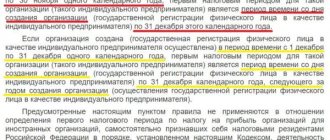The tax on expensive cars has become lower
In fact, new vehicle tax rates in 2021 will affect expensive cars. Thus, Law No. 335-FZ of November 27, 2021, with amendments to the Tax Code of the Russian Federation, reduced the increasing coefficient for calculating the tax on cars worth from 3 to 5,000,000 rubles to a minimum value of 1.1 from 01/01/2018. Note that until 2021, such a coefficient could be used in calculations only for cars from 2 to 3 years from the year of manufacture, and according to the new rules - simply up to 3 years from removal from the assembly line (new edition of clause 2 of Article 362 of the Tax Code RF).
In addition, for other expensive cars costing from 3 to 5 million rubles, there will no longer be increasing factors of 1.3 (when 1-2 years have passed since the year of manufacture) and 1.5 (if the car is less than a year old). In fact, the coefficient of 1.1 swallowed them up.
That is, as a result, the tax for these vehicles will be 20-40 percent less from 2018. It is necessary to take into account changes when calculating transport tax from 2021.
For your convenience, here is an explanatory table of changes in transport tax from 2021:
| Average cost of a car, million rubles. | Number of years since the year of issue | Coefficient in 2021 | Coefficient from 2021 |
| From 3 to 5 inclusive | From 2 to 3 years | 1,1 | 1,1 |
| From 1 year to 2 years | 1,3 | ||
| No more than 1 year | 1,5 | ||
| From 5 to 10 inclusive | No more than 5 years | 2 | 2 |
| From 10 to 15 inclusive | No more than 10 years | 3 | 3 |
| From 15 | No more than 20 years | 3 | 3 |
Let us remind you that I apply these increasing factors only to those passenger cars that are included in a special list. It is maintained and posted on its website by the Russian Ministry of Industry and Trade. Here is the exact link for the 2021 tax season:
https://minpromtorg.gov.ru/common/upload/files/docs/Perechen_2017_dlya_publikatsii.pdf
Also see “List of the Ministry of Industry and Trade of expensive cars in 2021.”
The general transport tax rates were not affected by changes in 2021 (clause 1 of Article 361 of the Tax Code of the Russian Federation). Meanwhile, regional authorities can correct them. Therefore, you need to refer to the law of your constituent entity of the Russian Federation on transport tax.
Transport tax rates by region in 2021
| Region | Rate RUR for 1 hp | 0-100 | 100-150 | 150-200 | 200-250 | 251+ |
| Adygea, republic | 10 | 20 | 40 | 70 | 130 |
| Altai region | 10 | 20 | 25 | 60 | 120 |
| Altai, republic | 10 | 14 | 20 | 45 | 120 |
| Amur region | 15 | 21 | 30 | 75 | 150 |
| Arhangelsk region | 14 | 24 | 50 | 75 | 150 |
| Astrakhan region | 14 | 27 | 48 | 71 | 102 |
| Bashkiria, republic | 25 | 35 | 50 | 75 | 150 |
| Belgorod region | 15 | 25 | 50 | 75 | 150 |
| Bryansk region | 10 | 18 | 40 | 75 | 130 |
| Buryatia, republic | 9.5 | 17.9 | 25.5 | 38.3 | 76.5 |
| Vladimir region | 20 | 30 | 40 | 75 | 150 |
| Volgograd region | 9 | 20 | 40 | 75 | 150 |
| Vologda Region | 25 | 35 | 50 | 75 | 150 |
| Voronezh region | 25 | 35 | 50 | 75 | 150 |
| Dagestan, republic | 8 | 10 | 35 | 50 | 105 |
| Jewish Autonomous Region | 8 | 16 | 40 | 60 | 95 |
| Transbaikal region | 7 | 10 | 20 | 33 | 65 |
| Ivanovo region | 10 | 20 | 35 | 60 | 120 |
| Ingushetia, republic | 5 | 7 | 10 | 30 | 40 |
| Irkutsk region | 10.5 | 14.5 | 35 | 52.5 | 105 |
| Kabardino-Balkaria, republic | 7 | 15 | 35 | 65 | 130 |
| Kaliningrad region | 2.5 | 15 | 35 | 66 | 147 |
| Kalmykia, republic | 11 | 22 | 47 | 75 | 150 |
| Kaluga region | 10 | 25 | 50 | 75 | 150 |
| Kamchatka Krai | 9 | 24 | 40 | 68 | 130 |
| Karachay-Cherkessia, republic | 7 | 14 | 25 | 35 | 95 |
| Karelia, republic | 6 | 30 | 50 | 75 | 150 |
| Kemerovo region | 8 | 14 | 45 | 68 | 135 |
| Kirov region | 20 | 30 | 44 | 60 | 120 |
| Komi Republic | 15 | 20 | 50 | 75 | 150 |
| Kostroma region | 14 | 26.8 | 38 | 60 | 120 |
| Krasnodar region | 12 | 25 | 50 | 75 | 150 |
| Krasnoyarsk region | 5 | 14.5 | 29 | 51 | 102 |
| Crimea, republic | 5 | 7 | 15 | 20 | 50 |
| Kurgan region | 10 | 27 | 50 | 75 | 150 |
| Kursk region | 15 | 22 | 40 | 70 | 150 |
| Leningrad region | 18 | 35 | 50 | 75 | 150 |
| Lipetsk region | 15 | 28 | 50 | 75 | 150 |
| Magadan Region | 6 | 8 | 12 | 18 | 36 |
| Mari El, republic | 25 | 35 | 50 | 90 | |
| Moscow, city | 12 | 35 | 50 | 75 | 150 |
| Mordovia, republic | 17.3 | 25.9 | 37.9 | 75 | 150 |
| Moscow region | 10 | 34 | 49 | 75 | 150 |
| Murmansk region | 10 | 15 | 25 | 40 | 80 |
| Nenets Autonomous Okrug | 0 | 25 | 50 | ||
| Nizhny Novgorod Region | 22.5 | 31.5 | 45 | 75 | 150 |
| Novosibirsk region | 6 | 10 | 30 | 60 | 150 |
| Omsk region | 7 | 15 | 30 | 45 | 90 |
| Orenburg region | 0 | 15 | 50 | 75 | 150 |
| Oryol Region | 15 | 35 | 50 | 75 | 150 |
| Penza region | 15 / 21 | 30 | 45 | 75 | 150 |
| Perm region | 25 | 30 | 50 | 58 | |
| Primorsky Krai | 18 | 26 | 43 | 75 | 150 |
| Pskov region | 13 / 15 | 25 | 50 | 75 | 150 |
| Rostov region | 12 | 15 | 45 | 75 | 150 |
| Ryazan Oblast | 10 | 20 | 45 | 75 | 150 |
| Samara Region | 16 | 20 | 45 | 75 | 150 |
| Saint Petersburg, city | 24 | 35 | 50 | 75 | 150 |
| Saratov region | 14 | 30 | 50 | 75 | 150 |
| Sakhalin region | 10 | 21 | 35 | 75 | 150 |
| Sverdlovsk region | 2.5 | 9.4 | 32.7 | 49.6 | 99.2 |
| North Ossetia, republic | 7 | 15 | 20 | 45 | 90 |
| Sevastopol, city | 5 | 7 | 25 | 75 | 100 |
| Smolensk region | 10 | 20 | 40 | 60 | 100 |
| Stavropol region | 7 | 15 | 36 | 75 | 120 |
| Tambov Region | 20 | 30 | 50 | 75 | 150 |
| Tatarstan, republic | 25 | 35 | 50 | 75 | 150 |
| Tver region | 10 | 21 | 30 | 45 | 90 |
| Tomsk region | 5 | 8 | 20 | 30 | 75 |
| Tula region | 10 | 25.4 | 50 | 75 | 150 |
| Tyva, republic | 7 | 11 | 20 | 30 | 70 |
| Tyumen region | 10 | 30 | 34 | 40 | 66 |
| Udmurtia, republic | 8 | 20 | 50 | 75 | 100 |
| Ulyanovsk region | 12 | 30 | 45 | 65 | 115 |
| Khabarovsk region | 12 | 16 | 30 | 60 | 150 |
| Khanty-Mansi Autonomous Okrug | 5 | 7 | 40 | 60 | 120 |
| Khakassia, republic | 6 | 15 | 25 | 40 | 75 |
| Chelyabinsk region | 7.7 | 20 | 50 | 75 | 150 |
| Chechnya, republic | 7 | 11 | 24 | 48 | 91 |
| Chuvashia, republic | 13 | 23 | 50 | 75 | 150 |
| Chukotka Autonomous Okrug | 5 | 7 | 10 | 15 | 30 |
| Yakutia, republic | 8 | 13 | 17 | 30 | 60 |
| Yamalo-Nenets Autonomous Okrug | 15 | 24.5 | 25 | 37.5 | 75 |
| Yaroslavl region | 15.8 | 28.1 | 45 | 68 | 145 |
The amount of tax depends on many factors. Among them are the type of vehicle, its service life, engine power, and the availability of benefits. In addition, the base rate in different regions of Russia may differ significantly, and for expensive cars an increasing coefficient is applied. The rate for each region and separately for vehicles can be viewed on the official website of the Federal Tax Service, or use one of the calculators offered by numerous specialized sites.
The legislative framework allows regions to increase or decrease the federal rate by 10 times.
Documents supporting the benefit do not need to be submitted.
There are significant changes to the transport tax from 2021 regarding the procedure for obtaining benefits for it. The bottom line is that from January 1, 2018, an application can be submitted to the Federal Tax Service without supporting documents. As a result, it is now easier to claim a benefit and without unnecessary paperwork (Law No. 286-FZ dated September 30, 2017, as amended by the Tax Code of the Russian Federation).
According to the new edition of paragraph 3 of Art. 361.1 of the Tax Code of the Russian Federation, if the owner of a vehicle has submitted an application for a benefit to the Federal Tax Service, indicated in it the relevant supporting documents, but did not submit them, the inspector is obliged to make a request to the bodies/organizations/officials that issued them. If they do not provide documents, the inspector will request them from the citizen himself. And then the individual will receive an answer about whether the benefit is approved or not.
According to the new rules, no more than 10 days can pass from the moment of filing an application for a transport tax benefit to receiving a response from the Federal Tax Service.
In connection with these changes, from 01/01/2018 a new application form for benefits on three taxes is in force - for land, transport and property. It was approved by order of the Federal Tax Service of Russia dated November 14, 2021 No. ММВ-7-21/897. This is what it looks like in terms of transport tax:
As you can see, from 2021 the form of this application is more similar to a tax return. In any case, the structure and filling principle have become similar.
The main thing is that from 2021 the owner of the vehicle can choose from two options:
1. Immediately submit to the Federal Tax Service, along with an application for a benefit, documents justifying the right to it.
2. Just provide the details of these documents in the application.
You can see how the consideration of an application for a transport tax benefit is progressing in your personal account on the website of the Federal Tax Service of Russia. If one is not connected, you can choose another method of notification:
• at the tax office;
• MFC (“My Documents”) through which the application was submitted;
• by mail.
You can apply for a transport tax benefit to any Federal Tax Service Inspectorate, as well as through an individual’s personal account on the website of the Federal Tax Service of Russia.
Transport tax benefits
Fiscal authorities, when applying an increased coefficient to calculate the tax on expensive vehicles, do not forget to take into account the interests of other categories of citizens and organizations.
For individuals
As a rule, regions themselves determine the categories of citizens who are exempt from paying taxes. Basically, these are Heroes of the USSR and Russia, veterans, disabled people, parents of many children and participants in the liquidation of the accident at the Chernobyl nuclear power plant. Vehicles provided by social services also fall under preferential taxation.
In a number of regions of Russia, taxes are not levied on owners of electric vehicles or vehicles equipped with gas installations .
For legal entities
Legal entities also have benefits for paying transport tax; for example, in Moscow, companies engaged in transporting passengers in the city are exempt from it. The zero rate also applies to agents of special economic zones.
In addition, the category of beneficiaries includes:
- Companies that own commercial and fishing vessels or water transport, the main activity of which is cargo and passenger transportation.
- Entrepreneurs working in agriculture (the share of sales of agricultural products must exceed 50% of the company's total revenue) are also exempt from tax on combines, tractors, vehicles for transporting fertilizers and finished products.
- Vehicles and equipment of military and law enforcement agencies (MoD, Civil Defense, FSB, Ministry of Emergency Situations, Foreign Intelligence Service).
- Medical planes and helicopters, with the image of the Red Cross or Crescent on board.
A car that is wanted after being stolen is also exempt from paying transport tax; for this, a supporting document from the police must be submitted to the fiscal authorities.
If an organization falls under the above categories of beneficiaries, it is obliged to notify the tax authorities about this. Accrual of a zero rate is possible only after submitting the appropriate form to the Federal Tax Service. This is due to the fact that previously this information was reflected in tax returns, which is no longer needed for transport tax. Individuals and individual entrepreneurs do not have to submit information; tax officials will do this for them.
New declaration form for 2017
Order of the Federal Tax Service of Russia dated December 5, 2021 No. ММВ-7-21/668 established a new form of transport declaration. In 2021, you need to report for 2017 on this form, which no longer needs to be stamped. The deadline remains the same - no later than February 1, 2018. It will be a working day - Thursday.
Among other things, Section 2 of the declaration has been adjusted. The following lines appeared in it:
- vehicle registration date;
- date of termination of vehicle registration (deregistration);
- year of manufacture of the vehicle;
- tax deduction code;
- the amount of tax deduction (in rubles).
In addition, the new form provides the opportunity to indicate a tax benefit and/or deduction for heavy cargo registered in the Platon system.
Another important innovation is the ability to indicate the total tax amount for all vehicles located in the same region (by prior agreement with the local Federal Tax Service).
The rules for filling out the declaration have also been clarified if the registration of a vehicle or deregistration occurred before or after the 15th day of the corresponding month.
Also see “What will change in 2021: taxes, insurance premiums, reporting, accounting and a new fee.”
Read also
08.10.2018
Results
The 2021 transport tax is calculated using the rules both contained in the Tax Code of the Russian Federation and those established by the laws of the region.
The latter can vary significantly for different regions, which makes the tax individual in its application in each specific subject of the Russian Federation. Among the factors determined by the region is the size of the bet. Considering that the permissible spread of rates is quite large, completely different values may be used in neighboring regions. You can find more complete information on the topic in ConsultantPlus. Free trial access to the system for 2 days.
Reporting
There is no need to submit a transport tax report for 2021 and future periods. The last time payers filed a transport tax return for 2021 was before February 1, 2021. Now the Federal Tax Service will only accept declarations for periods before 2020 and clarifications to declarations filed in 2021 due to the reorganization.
Now organizations themselves calculate and transfer taxes to the budget, and the tax office will monitor the correctness of payment. The inspection will reflect the results of its calculations in a message in the approved form.
Fill out and submit your transport tax return online without errors and on time! We are giving access for 3 months to Kontur.Ektern!
Payment procedure for individuals
Individuals do not need to independently calculate the amount of the contribution, nor report on it. The Federal Tax Service calculates the amount based on the data received from the State Traffic Safety Inspectorate, and then sends a letter with the amount of the fee to the payer. Funds must be transferred before December 1 of the year following the reporting year. That is, for using a vehicle in 2018, the car owner will pay in 2021. You can find out how much you need to pay on the official website of the Federal Tax Service using the tax calculator.
The car owner must notify the Federal Tax Service of the following situations:
- The vehicle was stolen - the Federal Tax Service will stop sending payments;
- The vehicle has been sold - the Federal Tax Service will send payments until the new owner registers the car in his name;
- The vehicle was purchased on credit - the tax will be calculated from the date of registration with the State Traffic Safety Inspectorate.






